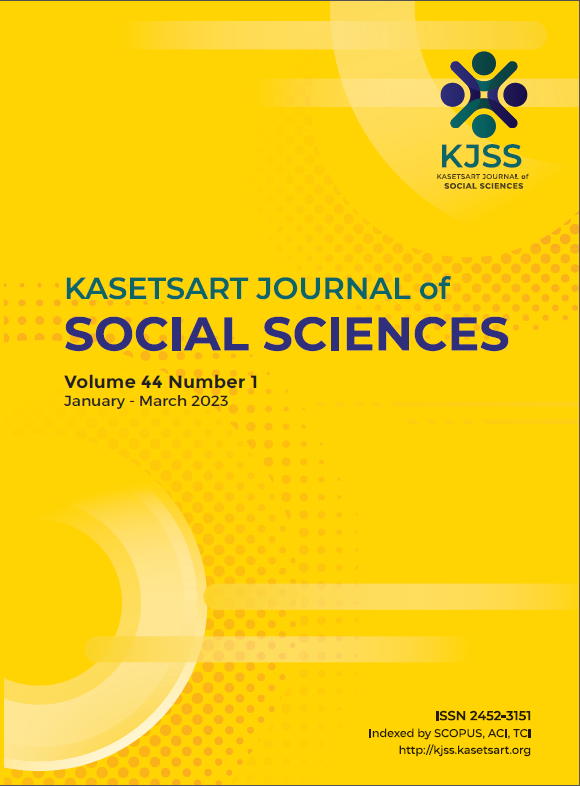Mediating effects of sufficiency living wage between fair pay and work/ life capabilities among workers in Thailand
Keywords:
mediation analysis, pay fairness reciprocity, sufficiency economy philosophy, sufficiency living wage, work/life capabilitiesAbstract
In a world where income inequalities continue to hamper sustainable development, provision of living wage could promote quality of life for both workers and their families. This research aimed to examine the role of sufficiency living wage (SLW) with the pay fairness reciprocity (PFR), and work/life capabilities among workers in Thailand. Developed through previous research, the emergent concept of SLW shows how Thai workers integrate their need for a living wage within the sufficiency economy philosophy framework. Furthermore, the three factors of SLW, living with self-immunity (LSI), perceived psychological utility (PPU), and moderate consumption (MC), show positive psycho-social significance. This research was designed to empirically test these implications. Questionnaires were
used to collect data from a sample of 391 white- and blue-collar workers in Thailand. Positive significant correlations were found between the three factors of SLW and PFR, and with work/ life capabilities for both whiteand blue-collar workers. The 3 dimensions of SLW were tested for mediation by bootstrapping using the PROCESS macro (Hayes, 2018). Results showed that LSI, PPU, and MC mediated the relationship between PFR and work capabilities, while only LSI and MC mediated the relationship between PFR and life capabilities. These results indicate the value of SLW in both economic terms and as a psycho-social mechanism that could enhance
the wellbeing of workers through inner satisfaction. Implications of these findings are discussed from both theoretical and applied perspectives for enhancing work/ life capabilities.
Downloads
Published
How to Cite
Issue
Section
License

This work is licensed under a Creative Commons Attribution-NonCommercial-NoDerivatives 4.0 International License.
This is an open access article under the CC BY-NC-ND license http://creativecommons.org/licenses/by-nc-nd/4.0/










